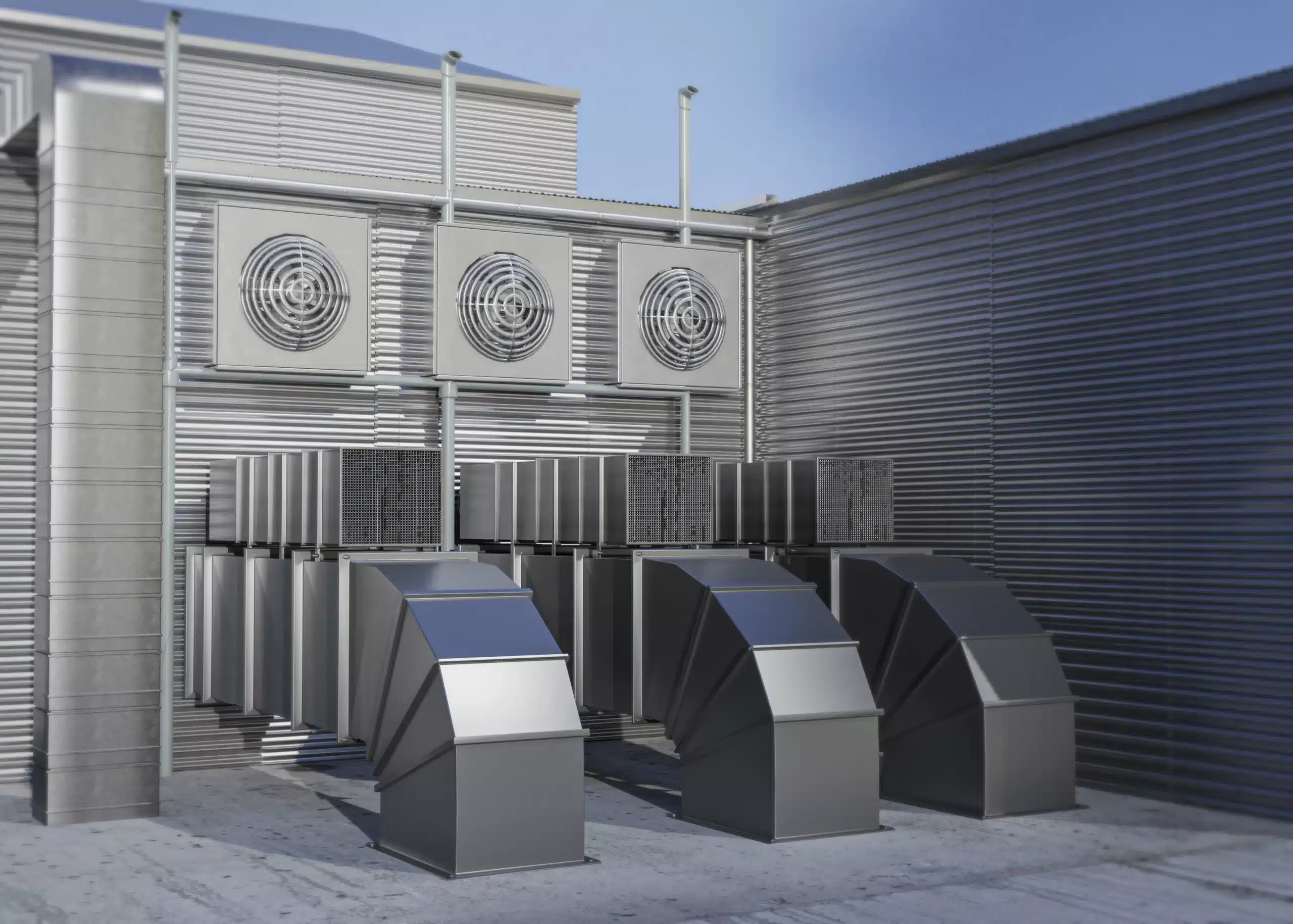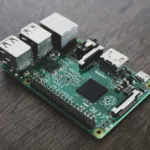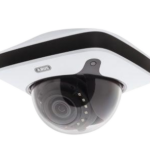
Introduction
HVAC (Heating, Ventilation, and Air Conditioning) systems are central to maintaining indoor comfort, energy consumption, and air quality in multiple buildings. With the progression in technology, HVAC systems have also advanced through the integration of Artificial Intelligence (AI) and sensor technology––enhancing efficiency and reducing operating costs. This article presents various aspects of AI and sensor integration, facilitating the establishment of smarter next-generation HVAC systems.
The Evolution of HVAC Systems: The Need for Smarter Solutions
Traditionally, they have mainly been mechanical (manual), with limited capabilities, including inefficiency, poor designs, high environmental impacts, and high energy consumption. Thermostats would react to temperature changes but without the ability to understand or predict usage patterns. However, the advent of digital and advanced control systems has brought significant improvements––thanks to AI and sensor technology that offer unprecedented benefits in terms of enhanced control, reduced carbon footprint, added comfort, and efficiency.
Understanding Next-Gen HVAC Systems
Next-Gen HVAC systems refer to the latest and most advanced technologies and designs in the field of HVAC systems. These systems are developed to be more energy-efficient, environmentally friendly, and technologically advanced compared to traditional system. Next-gen HVAC’s incorporate special characteristics that focus on various advancements in systems, including reduced noise, advanced control systems, heat recovery technologies, and smart connected features, ultimately resulting in optimised comfort and controlled automation.
AI-Powered HVAC: Intelligent and Predictive
AI––the brain behind smart HVAC systems, drives a paradigm shift in terms of reactive to predictive and proactive management. AI-driven smart HVAC systems offer several benefits, including:
- Enhanced and Optimised User Comfort: Machine learning algorithms can analyse maximum amounts of data from sensors and external sources (like weather forecasts) to optimise HVAC operations. For instance, AI can predict the occupancy of a building and adjust temperatures accordingly, ensuring users’ comfort while minimising energy use.
- Robust Energy Efficiency: One of the most significant benefits of AI in HVAC is enhanced energy efficiency. By learning and adapting to usage patterns, AI can optimise heating and cooling cycles, leading to substantial energy savings. This is not only beneficial for reducing utility bills but also crucial for reducing the carbon footprint of buildings.
- Predictive Maintenance: Another advantage is predictive maintenance. AI algorithms can detect anomalies in system performance, predicting potential failures before they occur––reducing downtime and extending the lifespan of HVAC equipment.
- Improved Air Quality Management: AI systems can monitor indoor air quality in real time, adjusting ventilation rates and filters as needed to maintain optimal air quality standards.
The Role of Sensors: The Eyes and Ears of HVAC Systems
Sensors are the cornerstone of modern HVAC’s, providing the critical data needed for AI algorithms to function effectively. They can measure various environmental parameters like temperature, humidity, air quality, and occupancy levels. Here are how sensors facilitate HVAC systems:
- Enhanced Comfort – Advanced sensor-based HVAC systems can maintain optimal indoor air quality and comfort levels. For instance, temperature and humidity sensors detect changes in occupancy, temperature, and humidity, adjusting the system in real time. This ensures a consistently comfortable environment tailored to the needs of the occupants.
- Air Quality Sensors: Real-Time Monitoring – With a growing emphasis on health and well-being, air quality sensors are becoming increasingly important. These sensors monitor pollutants, CO2 levels, and other air quality indicators, enabling the HVAC system to adjust ventilation rates and filtration settings to ensure a healthy indoor environment.
- Occupancy Sensors – Occupancy sensors play a crucial role in energy efficiency. By detecting the presence or absence of people in space, HVAC systems can adjust their operations accordingly, avoiding unnecessary heating or cooling of unoccupied areas.
Integration with Smart Building Systems
The integration of AI and sensors is a significant trend towards smart building technology. These systems don’t operate in isolation but are part of an interconnected network that includes lighting, security, and other building management systems.
- Data-Driven Decision Making: The integration enables facility managers to make data-driven decisions. By analysing data from various systems, managers can optimise overall building performance, leading to increased efficiency and reduced operational costs.
- IoT and Connectivity: The IoT (Internet of Things) plays a pivotal role in this integration. Sensors and AI-enabled devices are interconnected, sharing data and insights, which allows for a more holistic approach to building management.
Use Cases of Next-Gen HVAC Systems: AI and Sensors in Action
Next-generation HVAC systems offer a range of practical applications and have been implemented in various countries and companies (including Google and Microsoft) around the world. The adoption of these systems is a global trend driven by factors like energy cost savings, regulatory pressures for reduced emissions, and the increasing demand for personalised and comfortable indoor environments. Here are some countries where such systems are in use:
- United States – The U.S. has seen widespread adoption of smart HVAC systems, particularly in commercial buildings, driven by energy efficiency goals and smart city initiatives.
- Singapore – As a leader in smart building technologies, Singapore has implemented advanced HVAC systems in many of its buildings, focusing on sustainability and energy efficiency.
- Japan – Known for its technology-driven approach, Japan has implemented advanced HVAC systems in many of its modern buildings, focusing on energy savings and high-efficiency systems.
- China – In its rapidly growing urban centers, China has been incorporating AI-driven HVAC systems to tackle energy consumption challenges and improve air quality in buildings.
- United Arab Emirates – In Dubai, there is a growing trend of integrating AI into HVAC systems, especially in high-end commercial and residential buildings, aligning with their smart city goals.
Next-Gen HVAC Systems: Challenges and Considerations
Despite the numerous benefits of AI and sensor-based HVAC systems, there are challenges. One of the primary concerns is the initial cost of installation and integration. However, the long-term energy savings and maintenance costs can offset these expenses.
- Privacy and Security – With sensors collecting data on occupancy and usage patterns, there is a need for robust data protection measures to ensure privacy.
- Technical Expertise – The complexity of AI and sensor-based systems necessitates a certain level of technical expertise for installation, maintenance, and troubleshooting. This necessitates training and skill development among HVAC professionals.
Bottom Lines
The integration of AI and sensors in HVAC systems represents a significant advancement for modern buildings seeking to improve efficiency, sustainability, and overall occupant experience. Sensors and AI-driven HVAC’s are of great significance in their widespread adoption by leading countries and companies. The challenges of cost, privacy, security, and technical complexity, while significant, are outweighed by the long-term benefits and potential of these technologies. With AI and sensors at the forefront, the next generation of HVAC systems holds the promise of revolutionising the way we experience and manage indoor environments.





















